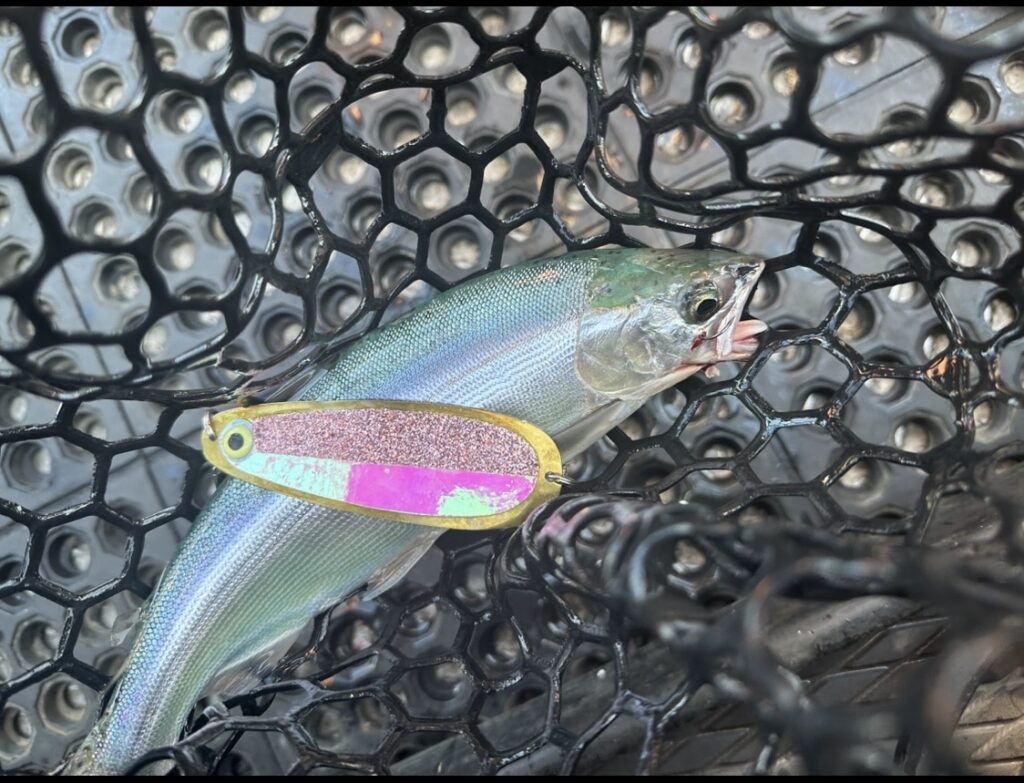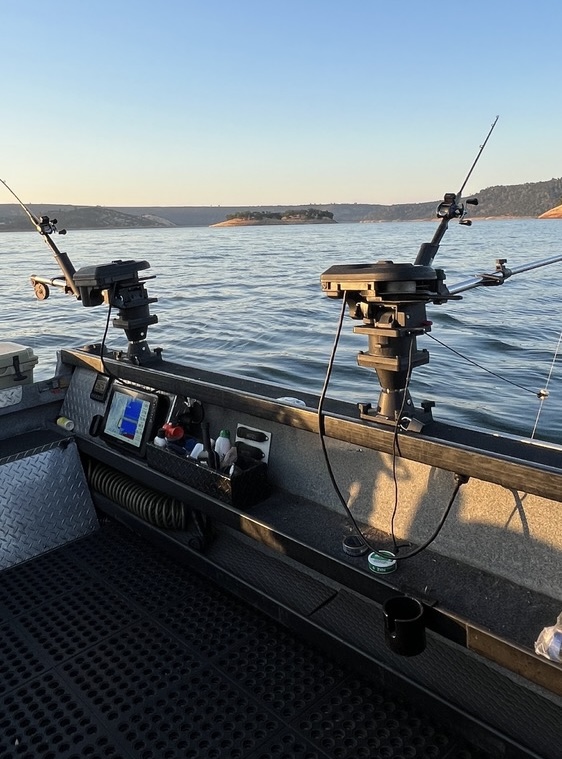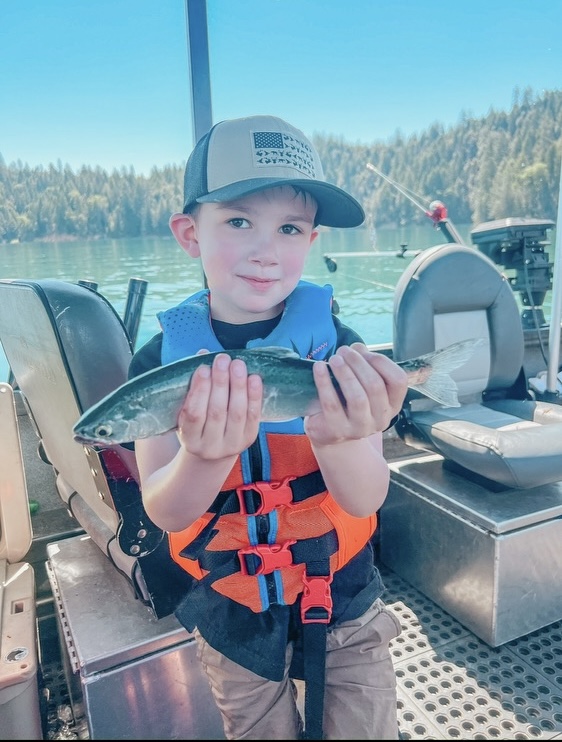Wanna Catch Kokanee? Here’s How A Guide Does It
The following appears in the August issue of California Sportsman:

By Mark Fong
While kokanee can be caught throughout the year, the summer months are considered to be prime time on the lakes and reservoirs across Northern and Central California.
When the bite is on, fishing can be fast and furious, making kokanee very popular. In addition to the catching, kokanee are excellent table fare.
Just in time for the peak of the season, we asked NorCal kokanee guide Brandon Abernathy of Rod Down Guide Service (roddownguide.com) to share a few of his top trolling tips for putting more fish in the boat.
THE GEAR
According to Abernathy, color and lure style go hand in hand.
“Kokanee can be really color-selective,” he says. “You really need to experiment with colors until you find the one they want, and be aware that color can change each day. My three go-to colors are pink, green and orange. As far as lure styles, you need a good selection of different-sized hoochies, some type of spinner and a T-Bone Tackle flutter-style spoon.”
As for dodgers, Abernathy’s favorite is a J&J Tackle moon jelly nickel Sling Blade in the 3.5- or 5.5-inch size. He’ll use the moon jelly regardless of which color or style lure he is trolling. During the early part of the season when the kokanee are shallow, he selects the 3.5-inch version. Later in the year when the fish are below 30 feet, Abernathy will upsize to the larger 5.5-inch version for more flash in the deeper water.
Abernathy typically runs an 8- to 10-inch leader from the lure to the dodger. The shorter the leader, the more action the dodger imparts to the lure.
Kokanee trolling is a system, so having the right rod and reel is just part of the equation. Abernathy likes a long rod designed for kokanee trolling, favoring those in the 7-foot, 9-inch to 8-foot range. He is sure to match it up with a linecounter reel such as the Daiwa Lexa 100 LC, which he spools up with 8-pound P Line CXX.

SECRET RECIPE
Tipping your lure with a piece of corn is standard practice for kokanee anglers. Some anglers get really creative and secretive with their corn recipes, adding all kinds of different ingredients, from garlic to anise oil and maple syrup, and more.
“Everybody seems to have their own thing when it comes to corn,” explains Abernathy. “The way I like to do it is simple and easy. I just add the oil from a can of tuna to a bottle of Pautzke’s Fire Corn. A lot of guys like to use canned shoepeg corn, but for me, Fire Corn gets bit more and stays on the hook better.”
“I have tried them both, one side of the boat with one and one side with the other. In fact, the other day when I was out fishing, the kokanee definitely wanted the Fire Corn more than they wanted the shoepeg corn.”

TROLLING DEETS
“Speed matters,” says Abernathy. “If you get into a school that won’t bite, you need to slow down or speed up and go back to where you were. A lot of time those fish will follow the lure and that little bit of variability – a turn, a speedup or a slowdown – will trigger that bite. It’s been proven that fish will follow a lure a long way, so a speedup, where they think it’s gonna get away from them, will trigger ’em to snatch it right up. A drop in speed makes the lure look like it’s injured and they’ll bite it too. On a turn, the outside rods will speed up and the inside rods will slow down.”
As a general rule, Abernathy prefers to keep his trolling speed between 1.4 mph and 1.6 mph, which is a little faster than the 1.0 to 1.3 that many kokanee trollers typically adhere to.
Finally, you can’t catch them if you can’t find them, making electronics a very important piece of the puzzle. Once he has located the kokanee with his graphs, Abernathy likes to stagger his downrigger depths. For example, if he marks fish at 35 feet and he is running four rods, he will set the lines at 33, 35, 38 and 43 feet, respectively. This allows him to determine the most productive depth.

It is important to note that the fish will almost always change depth during the course of the day, making it equally important for the angler to change as well.
Kokanee fishing can seem overwhelming, but with a bit of knowledge and time on the water, you can be on your way to enjoying this awesome fishing opportunity. CS
Editor’s note: If you would like to get a kokanee fishing lesson in person, contact Brandon Abernathy at (707) 927-6745 or message him on Facebook at RodDown Guide Service. In addition to kokanee, Abernathy guides for trout, landlocked king salmon and striped bass.



